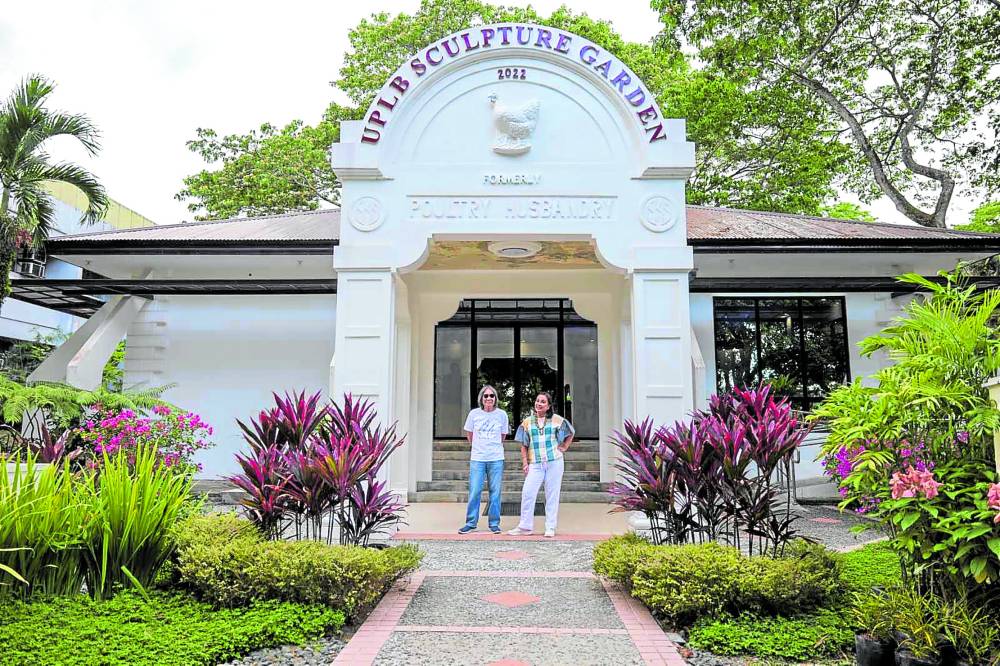.
Artist Luis “Junyee” Yee Jr. and Sen. Loren Legarda at the Sculpture Garden —CONTRIBUTED PHOTOS
Art, culture and nature are endlessly intertwined, and a shared passion for these between “father of installation art in the Philippines” Luis Yee Jr. and Sen. Loren Legarda spurred the creation of a first-of-its-kind permanent outdoor exhibit in the country.
Past the Animal Husbandry Arc at the Institute of Animal Science in the University of Los Baños (UPLB), Laguna, is a 5,000-square meter piece of land that plays host to six decades’ worth of art by the Agusan del Norte-born artist, also known by his nickname Junyee.
The seed of an idea for the project came to Yee around 12 years ago and, with Legarda’s support since 2018, it has finally come to fruition and will be open to the public starting today (May 22).
“This sculpture garden is a sanctuary of Junyee’s six decades of artistic expression,” the senator said during the launch of the UPLB Sculpture Garden last month. “It features different installations that have meaningful social relevance.”

Revolt work
As is typical of Yee’s works, the UPLB Sculpture Garden transports viewers to a different world as they get a closer look at recreations of some of his most important pieces of installation art.
Known for using natural and indigenous materials, Yee creates some works that are by nature ephemeral. But for this project, various artists were commissioned to interpret his works and turn them into permanent installations.
“Balag,” a freedom space that Yee made in 1970 as a young student activist in UP, was originally built out of bamboo and ropes. The very first outdoor installation art in the Philippines has been remade using metal to endure the seasons.
Originally crafted out of vines, twigs and leaves—the first time such a sculpture won a competition locally—his post-Edsa revolt work, “Bagong Binhi,” was transformed using wire this time.
Possibly the biggest installation art in the country, the original “Angud” back in 2007 was composed of 10,000 pieces of wood representing discarded parts of illegally cut trees spread throughout the Cultural Center of the Philippines front lawn spanning over a hectare. For the UPLB Sculpture Garden, Yee had a few remade in adobe which now sit among trees on gravel-covered ground.
A version of his 2009 “Open Doors,” a monument that won the grand prize and is now found in the Holocaust Memorial Park in Israel, can also be viewed in the garden.
The Sculpture Garden also displays a “Bantayog Wika” monument, which won a competition initiated by Legarda and the National Commission for Culture and the Arts in 2018 as part of their effort to save the country’s intangible cultural heritage. The markers serve to give pride to locals by acknowledging places in the Philippines that have their own languages, including Antique, Ifugao, Kalinga, Batanes, Pangasinan, South Cotabato and Tawi-Tawi.
Within the garden also stands “Makiling” (2019), a monument of Maria Makiling, a beloved figure in Philippine mythology associated with Mt. Makiling in Laguna to whom Yee dedicates the whole garden.
To help generate funds for maintenance, a pavilion inside the garden designed by architect Bimbo Baltre may be rented out as an events place.

